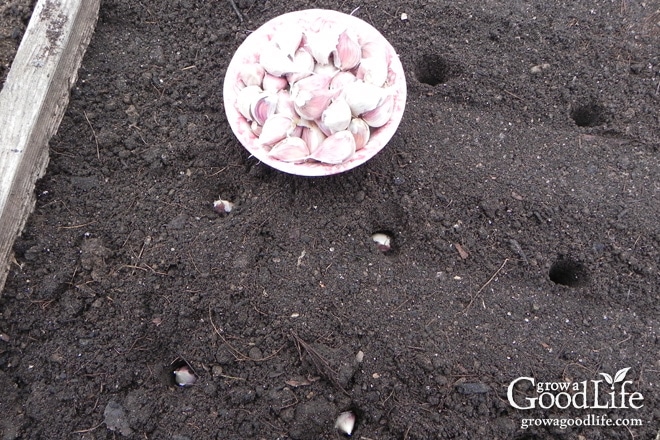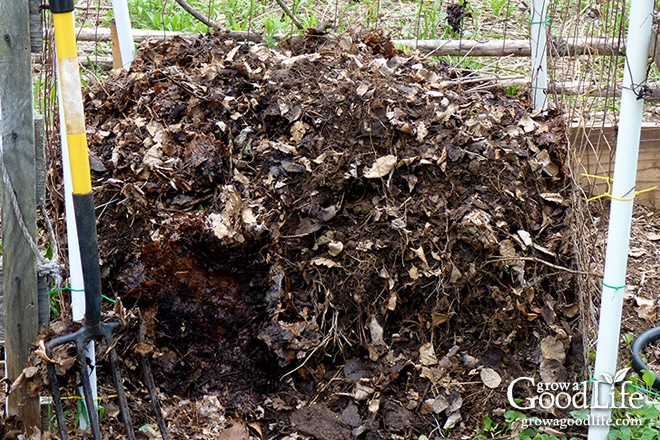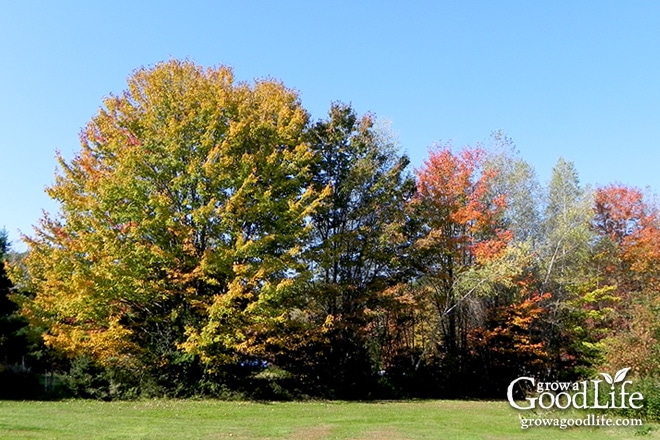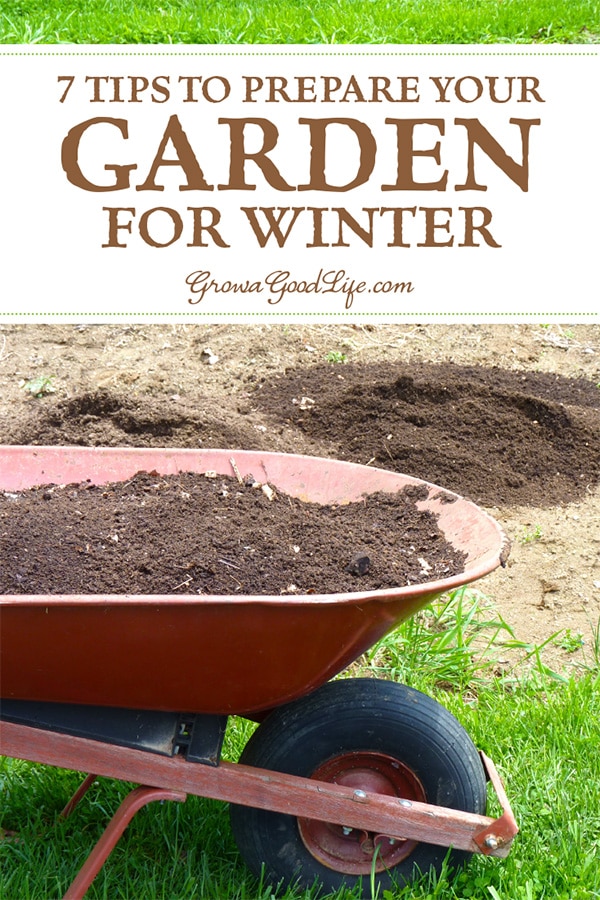How To Prepare My Garden For Winter
Taking the effort to clean up the vegetable garden beds in fall makes it very easy to begin growing the following spring.

I have mixed emotions each autumn as the gardening season comes to a close. Since our growing season is short, there is usually a preserving marathon in September and most of my time is spent in the kitchen attempting to keep up with all the harvest bounty that comes in all at once.
The vegetable garden gets very little attention during this time except for the daily walkthroughs to harvest what is ripe. There is no time for weeding, trimming, or making careful assessments as to the health of the plants. They are on their own, and either succeeds or fails.
By the time frost arrives in October, most of the garden is a mess of dead or dying plants, weeds, and rotting tomatoes. There will be no more tomatoes to process except for those still ripening on the kitchen counter. No more zucchini to preserve, cucumbers to turn into pickles, or string beans to can.
As the gardening season comes to a close, I am bursting with feelings of gratification and fulfillment as I preserve the harvest and fill our basement shelves with storage crops and jars of food. THIS is the reward for the hard work that has gone into growing and tending to the plants all season long. THIS is the compensation for all the time spent washing, chopping, and the late nights spent canning so the house can cool down overnight.
I am both relieved and a little sad when the majority of the garden harvest ends each season. I know I will feel better once I am outside and begin cleaning up and preparing the garden for winter. Here are some tips for fall garden cleanup and ways to prepare your vegetable garden for next year:
7 Tips to Prepare Your Vegetable Garden for Winter
Clean Up the Vegetable Garden Beds:
The vegetable garden is such a mess by the end of the season that it seems overwhelming at first. Break up tasks over time and work through the garden one bed or area at a time until they are all cleaned up and tucked in for winter.

- Remove All Dead Vegetation: Some diseases, including Late Blight and pests can overwinter on foliage and fruit left in the garden. Remove all dead plant material and any rotten fruit or vegetables. Healthy vegetation can be added to your compost pile. Most compost piles do not get hot enough to destroy disease or fungus. If your plants were unhealthy with mildew, mold or blight, dispose the foliage with the household trash or burn it to avoid spreading it to your compost pile.
- Add a Layer of Finished Compost and Mulch: Push aside mulch, pull any weeds, and add a 1-2-inch layer of finished compost. Lightly cover the beds with the old mulch to help suppress weeds and protect the soil without insulating the beds. Many diseases and pests are killed when the soil freezes in winter. Mulching the beds too thickly could prevent the soil from freezing completely. Once the ground freezes, add another layer of mulch to perennial herbs and flowers. Learn more about How Mulch Helps Your Garden.
Get a Soil Test:
Now is a good time to have a soil test done to determine if your soil will benefit from amendments to add nutrients and adjust pH. Soil tests results will tell you:
- Soil pH
- Levels of potassium (K), phosphorus (P), calcium (Ca), magnesium (Mg), and sulfur (S)
- Level of organic matter
- Lead content
A soil test will recommend how much lime and fertilizer (organic or chemical) to add to improve your soil. Lime is commonly used to adjust the soil pH. Adding lime in the fall is beneficial because it has all winter to dissolve into the soil. Other nutritional amendments can be added in the spring at planting time. Check your state's local extension office to see if they offer this service or can recommend someone.
Plant Garlic:
Select a garden bed that did not grow alliums this year and plant next year's garlic crop. Work in a generous amount of compost into the soil and some organic fertilizer.

Plant bulbs 6-inches apart and 4-inches deep, add a light layer of mulch at planting time, and follow with a substantial mulch layer after the ground freezes and the plants are dormant. See How to Plant Garlic in the Fall Garden.
Expand Your Vegetable Garden:
Fall is a great time to expand the vegetable garden. Consider building a few raised beds or square foot gardens right on top of the grass. Many garden centers have bagged organic garden soil and compost on sale in fall.

Fill your new beds with fresh soil, add a layer of mulch, and you will be ready to plant when next spring arrives. See How to Build a Square Foot Garden.
Gather Leaves:
Fall leaves are truly gardeners' gold. I try to gather as many leaves as I can in the fall and fill up my compost bins or store in garbage bags. Fall leaves can be used for mulching in the garden, as a brown component of compost, and leaf mold.
- Mulch: A generous layer of shredded leaf mulch over the soil surface will help suppress weeds, retain moisture, and provide soil enrichment as it decomposes, and encourages beneficial soil organisms.
- Compost: Leaves are the perfect brown (carbon) element for your compost pile. I like to keep an extra bin of leaves available, so I can toss layer into the compost bin as needed to offset the green material (nitrogen) such as kitchen waste.
- Leaf Mold: Over time, leaves gathered in a pile or compost bin will break down to a rich humus that can be incorporated into your soil to improve the structure and moisture holding ability. Leaf mold also provides food for beneficial soil organisms.

One of the easiest ways to gather and shred leaves is to use your lawn mower either with a bagger or without. If you use a bagger, the mower will shred up a nice combination of grass and leaves that can be emptied into your compost bins. Even if you don't have a bagger on your mower, with some strategic mowing, you can direct the side discharge to gather the shredded leaves and grass into a pile. Then rake up the pile and fill your compost bin or store in garbage bags. See 5 Ways Organic Mulch Helps Your Garden.
Take Notes:
As you are cleaning up your vegetable garden, think about what you grew and how it did. Take notes on how many plants you grew, which varieties did well, and how much you harvested. What pests did you have to deal with this year? Was there one garden bed that didn't perform very well? Jotting down these details now while they are fresh in your mind will help you plan your vegetable garden for next year. It will also give you time to research solutions to problems you may have encountered. Consider The Gardening Notebook by Angi Schneider to keep organized notes on your garden.
Enjoy Fall:
Take time to enjoy the crisp, cool days of fall as you work in the garden. No humidity certainly makes outdoor work more comfortable. Observe the beauty around you and the warmth of the sunlight. Take a deep breath and enjoy the fresh aroma of the soil. Soon all will be covered with snow and frozen until spring.

Taking the extra effort to clean up the vegetable garden beds in the fall makes it very easy to begin growing the following spring. The beds will be waiting and ready for planting. Simply rake the mulch aside, pull any weeds, amend with organic fertilizer based on your soil test results, and sow seeds or transplant seedlings into the garden. There will be plenty of time over winter to dream and plan next year's vegetable garden.
You May Also Like:
- 5 Steps to Storing Potatoes for Winter
- Grow Herbs Indoors: 5 Herbs that Thrive Inside All Winter
- How to Grow Edibles Indoors
[sc:gglnews ]

How To Prepare My Garden For Winter
Source: https://growagoodlife.com/prepare-vegetable-garden-winter/
Posted by: taylorsockle.blogspot.com

0 Response to "How To Prepare My Garden For Winter"
Post a Comment